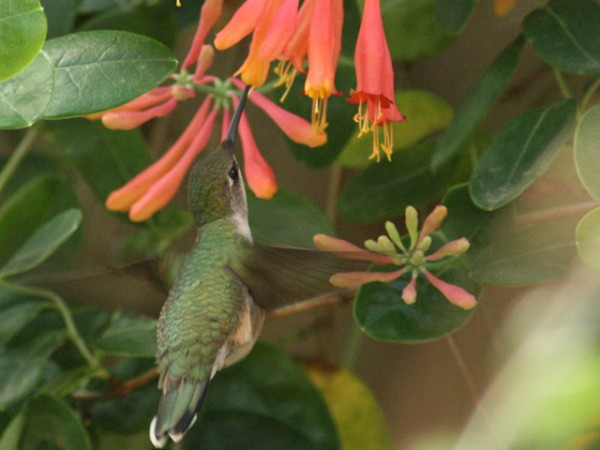Annual Cycle
Teaching Suggestions
Month by month, where are Ruby-throated Hummingbirds and what are they doing? The facts and photos in this photo gallery showcase the annual cycle of the Rubythroat. Choose from an array of activities to explore how these tiny birds respond to the seasons. Discover ways to document the changes you observe throughout the year.
Driving Question: What is the annual cycle of the Ruby-throated Hummingbird?
For Use with Photo Gallery: Annual Cycle
Start with Wonder
1. Explore Month-by-Month Images:
As you look at the monthly images in the annual cycle gallery, wonder aloud:
- Where are the hummingbirds are and what they are doing?
- What do hummingbirds eat at different times of the year? in different places?
- How do hummers know when it's time to migrate?
- When does nesting begin?
2. Create Wonder Rings:
As students explore the photos and facts, have them write questions on index cards. Punch a hole in each card. Insert the cards onto a metal o-ring. As students learn about hummingbirds, encourage them to add fact sentences to their wonder rings.
Showcase the Cycle
1. Create a Calendar
Challenge students to showcase what hummingbirds do throughout the year by designing a calendar that uses images and words to describe where hummingbirds are and what they are doing month-by-month. For example, challenge students to revisit the information included in the annual cycle photo gallery to collect month-by-month verbs for their calendar. Share the calendars to educate others about the hummingbird annual cycle.
2. Hallway Timeline
After exploring the photos and text as a class, create a large timeline to showcase the month-by-month events of the hummingbird annual cycle. As you track this season's migration, add your own observations to the timeline. Will your observations match the expected events of the annual cycle or will you see unexpected surprises? Report observations to Journey North.
3. Annual Cycle Wheel
Create a visual wheel to showcase the cyclical events. Give your students a design challenge: How would you showcase the significant month-by-month events of the hummingbird's annual cycle on a wheel? What words and images would you use to showcase where hummers are and what they are doing throughout the year?
4. Seasonal Circle Book
Make a circle book to showcase the cyclical events by season (fall, winter, spring, summer). Encourage students to revisit the slideshow's facts and photos to construct their circle book. Display books in your school's library.
5. Cause-Effect Flow Charts
Sunlight drives seasonal change. Choose key events from the annual cycle and explore cause-effect relationships by creating flow charts. Draw boxes and arrows to showcase the chain of events that start with sunlight changes. Example: Nest-building Chain of Events: Sun, Warmer Temps, Ground Thaws, Snow Melts, Mud for Nest-building
6. Other Creative Showcase Possibilities
Have students synthesize what they learned about the ruby-throated hummingbird's annual cycle by designing flip books, desktop calendars, lapbooks, file folder games, or accordian books. Share your projects on Twitter #JNshare.
Report Observations to Journey North and Track this Season's Migration
Month by month, what are hummingbirds doing where you live? Note the timing of annual cycle events and report your sightings. All observations contributed by citizen scientists help raise questions and build scientific understanding. View the migration maps and follow news updates to track seasonal migrations.


